BRNO
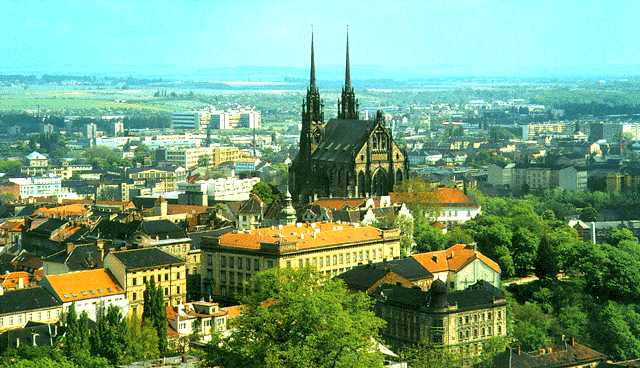

 Brno, the metropolis of the South
Moravian region is the second largest city in the Czech Republic with
a population of more than 400,000. From the north-east and the
north-west, the town is surrounded by the promontories of the Drahany
Uplands and the Bohemian-Moravian Highlands, while to the south Brno's
streets run into gently undulated plains around the massif of the
Palava Hills. The position of the town is advantageous - having been the
intersecting point of trade routes - and this fact, among others,
contributed to Brno becoming one of the most important industrial,
trade and cultural centres in the country. But Brno is not only a
modern city, but also the historical capital of Moravia and one of the
oldest urban agglomerations, with an ancient history and numerous
cultural monuments.
Brno, the metropolis of the South
Moravian region is the second largest city in the Czech Republic with
a population of more than 400,000. From the north-east and the
north-west, the town is surrounded by the promontories of the Drahany
Uplands and the Bohemian-Moravian Highlands, while to the south Brno's
streets run into gently undulated plains around the massif of the
Palava Hills. The position of the town is advantageous - having been the
intersecting point of trade routes - and this fact, among others,
contributed to Brno becoming one of the most important industrial,
trade and cultural centres in the country. But Brno is not only a
modern city, but also the historical capital of Moravia and one of the
oldest urban agglomerations, with an ancient history and numerous
cultural monuments.
 |
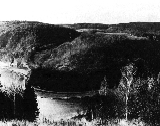 |
 This location was first
inhabited more than 70,000 years ago. Today an idea of the antiquity
of man's settlement of Brno can be seen in museum collections - it is
possible to trace a long sequence of cultures up to the time of the
arrival of the Slavonic tribes. The name of the city is derived from the
old Slavic word "brn", meaning clay.
This location was first
inhabited more than 70,000 years ago. Today an idea of the antiquity
of man's settlement of Brno can be seen in museum collections - it is
possible to trace a long sequence of cultures up to the time of the
arrival of the Slavonic tribes. The name of the city is derived from the
old Slavic word "brn", meaning clay.
 |
 |
 The founding of a castle
called Brno in the early 11th century was of immediate importance for
the estabilishment of the town. The castle and its outer bailey on the
rocky massif of present-day Petrov afforded a feeling of security to
the prince's entourage and administrative staff, as well as to the
craftsmen and merchants who settled there. The Czech King Vaclav I
endowed Brno with it first privileges in 1243. His successor, King
Premysl II ordered the demolition of the castle and founded another castle
called Spilberk outside the walls, on that strategically advantageous
hill.
The founding of a castle
called Brno in the early 11th century was of immediate importance for
the estabilishment of the town. The castle and its outer bailey on the
rocky massif of present-day Petrov afforded a feeling of security to
the prince's entourage and administrative staff, as well as to the
craftsmen and merchants who settled there. The Czech King Vaclav I
endowed Brno with it first privileges in 1243. His successor, King
Premysl II ordered the demolition of the castle and founded another castle
called Spilberk outside the walls, on that strategically advantageous
hill.
 The Church built many
cathedrals and monasteries here (Dominican, Benedictine, Augustinian,
Franciscan, Carthusian and other Orders), which were the centres of art
and culture.
The Church built many
cathedrals and monasteries here (Dominican, Benedictine, Augustinian,
Franciscan, Carthusian and other Orders), which were the centres of art
and culture.
 |
 The economic prosperity of
the town was also reflected in the fact that Brno was the seat of the
Moravian margraves from the beginning of the first half of the 14th
century. Here decisions were made about Moravia for two centuries.
The new Town
Hall used to be the place where Moravian assemblies, trials and
receptions of Czech kings took place. A profound crisis in the feudal
system affected the development of the Moravian metropolis in the late
14th and early 15th centuries. In 1428 and 1430 Catholic Brno
resisted the sieges of the Hussite armies. After the stagnation period
alot of building activity started in the town. The Gothic church of St.
James' Church goes back to that time as well as Gothic sculptured
portal in the tower of the Old Town Hall. These works reflect the
mastery of Anthony Pilgram, builder of St.Stephen's Church in Vienna.
The economic prosperity of
the town was also reflected in the fact that Brno was the seat of the
Moravian margraves from the beginning of the first half of the 14th
century. Here decisions were made about Moravia for two centuries.
The new Town
Hall used to be the place where Moravian assemblies, trials and
receptions of Czech kings took place. A profound crisis in the feudal
system affected the development of the Moravian metropolis in the late
14th and early 15th centuries. In 1428 and 1430 Catholic Brno
resisted the sieges of the Hussite armies. After the stagnation period
alot of building activity started in the town. The Gothic church of St.
James' Church goes back to that time as well as Gothic sculptured
portal in the tower of the Old Town Hall. These works reflect the
mastery of Anthony Pilgram, builder of St.Stephen's Church in Vienna.
 The Italian Renaissance artists
Pietro and Antonio Gabri and the stonemason Giorgio Gialdi left the
mark of their personalities on numerous buildings in the 16th century.
The Episcopal Court, the to be Governor's House and the facade of the
so-called Schwarz's House are reckoned among the most significant
monuments from that time.
The Italian Renaissance artists
Pietro and Antonio Gabri and the stonemason Giorgio Gialdi left the
mark of their personalities on numerous buildings in the 16th century.
The Episcopal Court, the to be Governor's House and the facade of the
so-called Schwarz's House are reckoned among the most significant
monuments from that time.
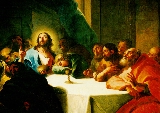 |
 The Turkish invasion of
Europe, however, necessitated the adoption of practical measures
to secure the preservation of lives. The first half of the 17th
century did not provide peaceful conditions for creative work.
The Swedish army, under the command of General Torstenson,
besieged Brno twice (1643 & 1645) but was obliged to retreat from the
city walls. The Swedes left Brno and its environs in a state of
desolation, after which the life of the town gradually progressed to
the next epoch of Baroque culture. In the second half of the 17th
century building activity was influenced by Jan Krtitel Erna
according to whose plans several buildings acquired a Baroque
appearance (the Dominican Church of St. Michael, The Dietrichstein
Palace, the House of Noblewomen and St. Thomas Church). The Baroque
style, supported by The Jesuits, asserted itself in Brno more radically in
the 18th century during the reign of Emperor Charles VI. The
change-over was in fact the work of a single builder M. Grimm, who
built, or participated in the building of Schrattenbach Palace,
St.Leopold's Church, the Baroque reconstruction of the nave of
St.Peter and Paul's Cathedral on Petrov, the reconstruction of the
choir in St. Thomas Church and some other buildings. In the second
half of the 18th century the rapidly developing factories and
manufactures contributed to the decline in crafts and the life of
the guilds. More and more factories were founded and when Joseph II
abolished serfdom in 1781, crowds came to Brno. The greatest
boom in the machine industry came as late as the 19th century.
The Turkish invasion of
Europe, however, necessitated the adoption of practical measures
to secure the preservation of lives. The first half of the 17th
century did not provide peaceful conditions for creative work.
The Swedish army, under the command of General Torstenson,
besieged Brno twice (1643 & 1645) but was obliged to retreat from the
city walls. The Swedes left Brno and its environs in a state of
desolation, after which the life of the town gradually progressed to
the next epoch of Baroque culture. In the second half of the 17th
century building activity was influenced by Jan Krtitel Erna
according to whose plans several buildings acquired a Baroque
appearance (the Dominican Church of St. Michael, The Dietrichstein
Palace, the House of Noblewomen and St. Thomas Church). The Baroque
style, supported by The Jesuits, asserted itself in Brno more radically in
the 18th century during the reign of Emperor Charles VI. The
change-over was in fact the work of a single builder M. Grimm, who
built, or participated in the building of Schrattenbach Palace,
St.Leopold's Church, the Baroque reconstruction of the nave of
St.Peter and Paul's Cathedral on Petrov, the reconstruction of the
choir in St. Thomas Church and some other buildings. In the second
half of the 18th century the rapidly developing factories and
manufactures contributed to the decline in crafts and the life of
the guilds. More and more factories were founded and when Joseph II
abolished serfdom in 1781, crowds came to Brno. The greatest
boom in the machine industry came as late as the 19th century.
 At that time, Brno
experienced a short intermezzo with Napoleon. On November 19th, 1805,
French troops headed by Napoleon, came to Brno. Napoleon was
accommodated in the Regent's palace, inspected Spilberk and then took leave
furtively. On December 2nd 1805, the Battle of Austerlitz, or the so
called Battle of The Three Emperors took place on the Prace Ridge situated
near Brno. Napoleon Bonaparte won the battle. He conducted his army
brilliantly from the hill, which offered the best view of the
battlefield. Napoleon and his army came back to Brno once more in
1809. He had the massive fortification of Spilberk pulled down and
the deep well filled up. The castle was turned into a prison. To
mark the end of the Napoleonic wars, an obelisk in the Napoleonic style
was built on Frantiskov (today Denisovy sady) in 1818.
At that time, Brno
experienced a short intermezzo with Napoleon. On November 19th, 1805,
French troops headed by Napoleon, came to Brno. Napoleon was
accommodated in the Regent's palace, inspected Spilberk and then took leave
furtively. On December 2nd 1805, the Battle of Austerlitz, or the so
called Battle of The Three Emperors took place on the Prace Ridge situated
near Brno. Napoleon Bonaparte won the battle. He conducted his army
brilliantly from the hill, which offered the best view of the
battlefield. Napoleon and his army came back to Brno once more in
1809. He had the massive fortification of Spilberk pulled down and
the deep well filled up. The castle was turned into a prison. To
mark the end of the Napoleonic wars, an obelisk in the Napoleonic style
was built on Frantiskov (today Denisovy sady) in 1818.
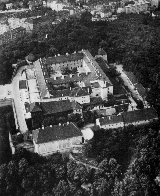 |
 From 1818, entrepreneurs
began to equip their factories with steam engines and new, more
sophisticated looms and presses, imported mostly from England. The
most important industry was the textile industry - Brno acquired the
nickname "the Austrian Manchester" at that time. In the mid-19th
century Brno was known in Europe as a notorious for its gaol and as a
drapery exporter.
The Spilberk prison was truly international. People like the French
postmaster Drouet, who recognized King Louis XVI and was the
consequently arrested, served their sentences in the grim conditions of the
castle catacombs. The Italian carbonari suffered here, their
hardships were depicted by a fellow sufferer Silvio Pellico and Hungarian
and Polish patriots also languished here.
From 1818, entrepreneurs
began to equip their factories with steam engines and new, more
sophisticated looms and presses, imported mostly from England. The
most important industry was the textile industry - Brno acquired the
nickname "the Austrian Manchester" at that time. In the mid-19th
century Brno was known in Europe as a notorious for its gaol and as a
drapery exporter.
The Spilberk prison was truly international. People like the French
postmaster Drouet, who recognized King Louis XVI and was the
consequently arrested, served their sentences in the grim conditions of the
castle catacombs. The Italian carbonari suffered here, their
hardships were depicted by a fellow sufferer Silvio Pellico and Hungarian
and Polish patriots also languished here.
 In the first decades of the
20th century, Leos Janacek walked through the streets of Brno with his
mind full of brilliant musical ideas and in the same period the poet
Petr Bezruc and, later on, the writer Jiri Mahen linked a part of
their lives with the town. The years between the two World Wars
represent a very significant chapter in the history of Brno. The
population of the town increased and thanks to the creative initiative
of a whole number of architects the town was enriched with modern
buildings of a very pioneering nature. Residential houses, schools,
hostels and other public buildings by Bohuslav Fuchs, office buildings
and family houses by Arnost Wiesner, blocks of flats by Josef Polacek
or schools by Mojmir Kyselka, added glamour to the new Brno. The works of
the outstanding avant-garde architects of that period - Adolf Loos,
Johann Pieter Oude, Ludwig Mies van der Rohe - fitted easily and
naturally into this environment. Mies van der Rohe designed the
unique Villa Tugendhat (1930), which, together with other interesting
and original buildings, forms a rare open-air city museum of
functionalism, attracting architects to this day. On the occasion of
the 10th anniversary of the establishment of the Czechoslovak
Republic, it was decided to organize a nation-wide exhibition in Brno.
In the valley of Pisarky, exhibition grounds were created and these
buildings clearly manifested the progressive style,
functionalism, which was the leading style of that period. The
pavilions and buildings built then, proved to be truly modern thirty
years later, when they served as the centre of the newly built
international trade-fair complex, which has accommodated various
international trade-fairs and competitions since 1959.
In the first decades of the
20th century, Leos Janacek walked through the streets of Brno with his
mind full of brilliant musical ideas and in the same period the poet
Petr Bezruc and, later on, the writer Jiri Mahen linked a part of
their lives with the town. The years between the two World Wars
represent a very significant chapter in the history of Brno. The
population of the town increased and thanks to the creative initiative
of a whole number of architects the town was enriched with modern
buildings of a very pioneering nature. Residential houses, schools,
hostels and other public buildings by Bohuslav Fuchs, office buildings
and family houses by Arnost Wiesner, blocks of flats by Josef Polacek
or schools by Mojmir Kyselka, added glamour to the new Brno. The works of
the outstanding avant-garde architects of that period - Adolf Loos,
Johann Pieter Oude, Ludwig Mies van der Rohe - fitted easily and
naturally into this environment. Mies van der Rohe designed the
unique Villa Tugendhat (1930), which, together with other interesting
and original buildings, forms a rare open-air city museum of
functionalism, attracting architects to this day. On the occasion of
the 10th anniversary of the establishment of the Czechoslovak
Republic, it was decided to organize a nation-wide exhibition in Brno.
In the valley of Pisarky, exhibition grounds were created and these
buildings clearly manifested the progressive style,
functionalism, which was the leading style of that period. The
pavilions and buildings built then, proved to be truly modern thirty
years later, when they served as the centre of the newly built
international trade-fair complex, which has accommodated various
international trade-fairs and competitions since 1959.
 |
 The promising development
of the town, which not even the drawn-out economic crisis of the
Thirties had been able to halt completely, was, however, put to a stop
by the greatest war-time tragedy which has ever threatened the existence of
mankind. The catacombs of Spilberk were used again during the World
War II by the Nazis.
The promising development
of the town, which not even the drawn-out economic crisis of the
Thirties had been able to halt completely, was, however, put to a stop
by the greatest war-time tragedy which has ever threatened the existence of
mankind. The catacombs of Spilberk were used again during the World
War II by the Nazis.
 |
 Today Brno is
a lively town
with beautiful surroundings. The shady forests, and Brno
lake, both accessible by means of the town's public transport system,
are cool and refreshing on hot summer days. Other encounters with the
past can be enjoyed in the halls and parks of chateaux and other
historical buildings, in both the near and more distant environs of the
town. These places clearly document the wide historical background
from which Brno has grown throughout many centuries.
Today Brno is
a lively town
with beautiful surroundings. The shady forests, and Brno
lake, both accessible by means of the town's public transport system,
are cool and refreshing on hot summer days. Other encounters with the
past can be enjoyed in the halls and parks of chateaux and other
historical buildings, in both the near and more distant environs of the
town. These places clearly document the wide historical background
from which Brno has grown throughout many centuries.
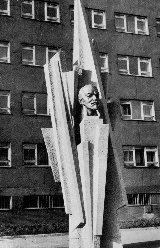 |